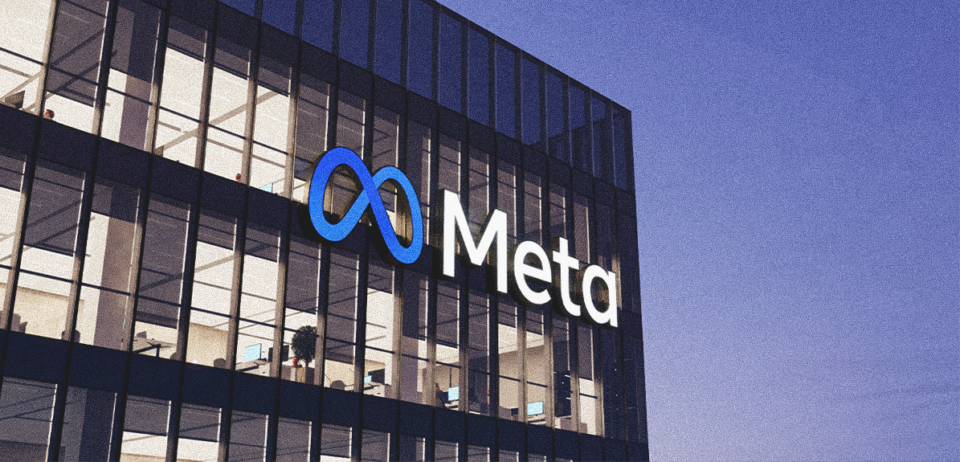
Meta’s Digital Marketing Playbook: Key Strategies Marketers Can’t Ignore
Meta is reshaping the digital marketing landscape with a series of powerful tools and innovations. To stay ahead of the curve, marketers must adapt quickly—and Meta’s Digital Marketing Playbook is essential reading. From social commerce and AI-powered advertising to privacy-first strategies, Meta is rewriting the rules.
For marketers and advertisers, the big question is: Are you keeping up or falling behind? To make your advertising campaign super effective, let’s dive into some key strategies and marketing tips from Meta that can take your campaign from “meh” to “mind-blowing.” Get ready for a big change—are you ready to score big?
Unlocking AI advertising with Meta’s digital marketing playbook
AI is no longer a futuristic concept—it’s the foundation of modern digital marketing. Meta’s digital marketing playbook heavily leans on AI tools to help brands run smarter campaigns.
The AI tools are designed to streamline campaign management and deliver stronger results. Meta’s AI tools are smartly designed to optimize and make campaigns perform smoother and more effectively among the audience.
One standout tool is Advantage+ Shopping Campaigns, which automates ad placements and optimizes creatives in real-time for better results. Consider it a clever AI assistant that ensures your advertisements are seen by the appropriate people with the least amount of work. Meanwhile, the other important tool, creative optimization, dynamically adjusts visuals, headlines, and formats based on audience behavior, making every ad customized for maximum impact.
Beyond that, predictive analytics helps forecast user behavior, helping advertisers refine their targeting and messaging with unmatched precision. For marketers, leveraging these AI-driven tools in their meta ad strategy isn’t just an advantage—it’s a necessity to stay ahead and maximize ROI.
From social media to shopping mall: Social commerce is here
Today, Meta isn’t just about likes and shares anymore. Instead, it has evolved itself into a full-fledged e-commerce powerhouse. Platforms like Instagram shopping and Facebook shops are smartly turning social media interactions into seamless shopping experiences allowing brands to connect with customers like never before.
This frictionless approach makes the buying process intuitive and convenient, boosting conversion rates. Meanwhile, Live Shopping is redefining engagement, allowing brands to showcase products in real-time, answer customer questions, and drive instant sales.
Another major game-changer? Influencer-Driven Commerce. Collaborations with content producers facilitate the discovery of new products, give brands access to highly interested consumers, and foster more genuine relationships. Meta’s digital marketing playbook recommends leveraging these tools not just as trends, but as long-term strategies for revenue growth.
Social commerce isn’t just a trend—it’s the future of online shopping. If your brand isn’t capitalizing on it, you’re missing out on a major revenue stream.
Privacy-first: Advertising strategies in the era without cookies
With data privacy concerns rising and Apple’s iOS updates reshaping the advertising landscape, Meta has adapted its approach to ensure compliance while maintaining campaign effectiveness. Marketers need to embrace privacy-first strategies to stay ahead.
One key solution is Meta’s Conversions API, which helps businesses track and measure conversions while respecting user privacy. This solution ensures a more safe and controlled data-sharing process by enabling advertisers to gather data directly from their own servers rather than depending on conventional tracking methods.
Another important adaptation is Aggregated Event Measurement (AEM), which enables advertisers to prioritize key events without violating data policies. This helps brands continue optimizing their campaigns while staying compliant with privacy regulations.
Finally, First-Party Data Collection is becoming increasingly vital. Brands must rely more on direct audience engagement through email lists, surveys, and loyalty programs to maintain strong targeting capabilities.
The days of easy third-party data tracking are over. In this new era, marketers who proactively shift towards privacy-compliant strategies will thrive.
Meta’s expanding advertising ecosystem
Meta isn’t just Facebook and Instagram anymore—it’s an entire ecosystem of platforms, each offering unique advertising opportunities. With Messenger, WhatsApp, and Audience Network in the mix, brands have more ways to engage their audience than ever.
Facebook Ads remain the backbone of Meta’s advertising strategy, offering robust targeting and creative flexibility. Instagram Ads thrive on visually driven content and influencer partnerships, making them ideal for brands that want to maximize engagement. Meanwhile, Messenger Ads allow businesses to connect with customers through direct, conversational marketing.
Beyond the core platforms, WhatsApp Business is rapidly growing as a hub for customer service and direct sales. At the same time, Audience Network extends ad reach beyond Meta’s apps to third-party sites and mobile applications.
Astute marketers are distributing their advertising budget among different channels to reach audiences where they are most engaged and optimize outcomes.
Insider tips for maximizing your Meta strategy
Want to maximize your results on Meta? Here are some key strategies from their digital marketing playbook to elevate your advertising game.
Start by embracing short-form video. Reels and Stories drive significantly more engagement than static posts, making them essential for visibility and interaction. These formats are quick, engaging, and favored by Meta’s algorithm, ensuring better reach and audience retention.
Next, test different ad formats. Carousels, videos, and interactive ads each perform differently depending on your audience. Experimenting with multiple formats allows you to identify what resonates most with your target market and optimize accordingly.
Finally, focus on community building. Engaging with followers through groups and interactive posts can boost organic reach and foster brand loyalty. Combine this with Lookalike Audiences, leveraging Meta’s AI to find new customers similar to your existing ones.
And, of course, stay flexible—monitor trends and adapt as the digital landscape evolves. The key to success is staying ahead of the curve and continuously optimizing your strategy.
Winning on the OG platform: Keeping your Facebook strategy fresh
We have witnessed the rise of many new social media platforms, but Facebook remains a powerhouse for digital marketers.
The key to staying relevant is leveraging its evolving features to drive engagement. Facebook Groups are a goldmine for brands looking to build loyal communities. Unlike traditional pages, groups foster meaningful conversations, making them a great way to boost organic reach and customer interaction.
Another must-have strategy is optimizing for mobile, as over 90% of Facebook users access the platform via their phones. This means ensuring ad creatives, videos, and website landing pages are mobile-friendly to provide a seamless experience. Additionally, Live Videos remain one of the most effective ways to engage audiences in real time, with interactive Q&As and behind-the-scenes content creating a sense of exclusivity.
Lastly, user-generated content (UGC) can significantly enhance credibility and engagement. People trust content from peers more than traditional brand messaging, so encouraging customers to share reviews, testimonials, and experiences can boost authenticity.
Facebook may be one of the oldest players in social media, but brands that continuously innovate their approach will see the best results.
Cut to the chase
Meta’s digital marketing playbook is continuously evolving. Brands that adapt to these updates—AI tools, social commerce, privacy-first strategies—will stand out in an increasingly competitive space. The age of “set it and forget it” is over. Winning today means continuous learning, agile strategies, and an openness to change.

